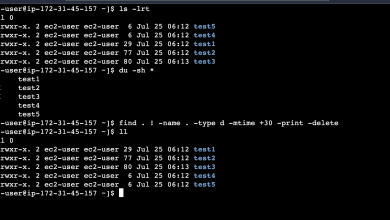How to Scan a Hard Disk Partition Using Badblocks or e2fsck

How to Scan a Hard Disk Partition Using Badblocks or e2fsck
Hard disk partitions, like any other storage medium, can develop bad sectors over time, which can lead to data corruption or loss. Tools like badblocks and e2fsck are essential for scanning and identifying problematic sectors in your hard disk. These Linux utilities help ensure that your filesystem remains healthy by detecting and isolating damaged sectors.
This guide will explain how to use both badblocks and e2fsck to scan hard disk partitions for errors.
1. What Are Bad Sectors?
Bad sectors are areas on a hard drive or storage device that are physically damaged or unable to maintain data integrity. When a partition develops bad sectors, it can become unreliable, leading to corrupted files, crashes, or even system failure. Regularly scanning for bad blocks can help prevent these issues.
2. Installing Badblocks and e2fsck
In most Linux distributions, both badblocks and e2fsck are pre-installed. These tools are part of the e2fsprogs package, which manages ext-based filesystems like ext2, ext3, and ext4.
To ensure you have them installed, use the following command (for Debian-based systems):
sudo apt update
sudo apt install e2fsprogs
For Red Hat-based systems:
sudo yum install e2fsprogs
3. Using Badblocks to Scan a Hard Disk Partition
The badblocks utility scans the disk for bad sectors and provides you with a list of them. The tool performs a read-only scan by default but can also be run in a destructive mode that overwrites data, so be careful when choosing the options.
Basic Syntax
sudo badblocks -v /dev/sdX
Replace /dev/sdX with your actual partition or disk identifier, such as /dev/sda1 for the first partition on the first hard disk.
Example:
sudo badblocks -v /dev/sda1
The -v flag enables verbose output, meaning it will display progress and detailed results during the scan.
Options:
-n (Non-destructive write test): Reads and writes to each block, but without losing data.
-w (Destructive write test): Overwrites data during the test. Only use this if you’re willing to erase all data on the partition.
Example of a non-destructive scan:
sudo badblocks -n /dev/sda1
The scan may take a long time, especially for larger partitions or drives.
4. Integrating Badblocks with e2fsck
e2fsck is a filesystem checker for ext2/ext3/ext4 filesystems and can work in conjunction with badblocks. By combining these tools, you can check for and repair filesystem errors while also scanning for bad sectors.
First, generate a list of bad blocks using badblocks:
sudo badblocks -v /dev/sda1 > badblocks.txt
Then, feed this list into e2fsck to mark those sectors as bad within the filesystem:
sudo e2fsck -l badblocks.txt /dev/sda1
The -l option tells e2fsck to mark the bad blocks and prevent the filesystem from using them in the future.
5. Using e2fsck Directly for Filesystem Checks
e2fsck is typically used to check and repair ext-based filesystems. It’s a powerful tool for fixing inconsistencies, corrupted files, and more. You can run e2fsck without using badblocks, though this will focus more on filesystem integrity rather than finding bad sectors.
Basic Syntax
sudo e2fsck -c /dev/sdX
The -c flag integrates a badblocks check into the e2fsck run.
Example:
sudo e2fsck -c /dev/sda1
This command will run a standard filesystem check while scanning for bad blocks. If e2fsck detects errors, it will prompt you to fix them. Use the following option to automatically attempt repairs:
sudo e2fsck -p /dev/sda1
The -p (preen) option automatically repairs problems without user interaction.
6. Verifying and Repairing Filesystems with e2fsck
Running e2fsck on a mounted partition can cause serious issues. Always unmount the partition before running the command:
sudo umount /dev/sda1
sudo e2fsck /dev/sda1
If the partition is part of the root filesystem and can’t be unmounted, you may need to boot into a live Linux environment or use the rescue mode of your distribution.
7. When to Use Badblocks vs e2fsck
Use badblocks if you suspect physical damage to your disk. It’s useful for scanning for bad sectors and ensuring the disk’s integrity.
Use e2fsck when you want to check and repair filesystems, especially on ext2/ext3/ext4 filesystems. It’s great for fixing logical errors like corrupted files or directory structures.
If you would like to improve yourself in server management, you can purchase a server from our site, experiment and improve yourself in an affordable and reliable environment. I wish you good luck.
8. Conclusion
Maintaining your hard disk’s health is crucial to ensuring data safety and system reliability. Tools like badblocks and e2fsck help identify potential disk failures and repair filesystems, protecting your valuable data from corruption. By regularly scanning for bad sectors and fixing filesystem errors, you can avoid significant issues and extend your disk’s lifespan.




